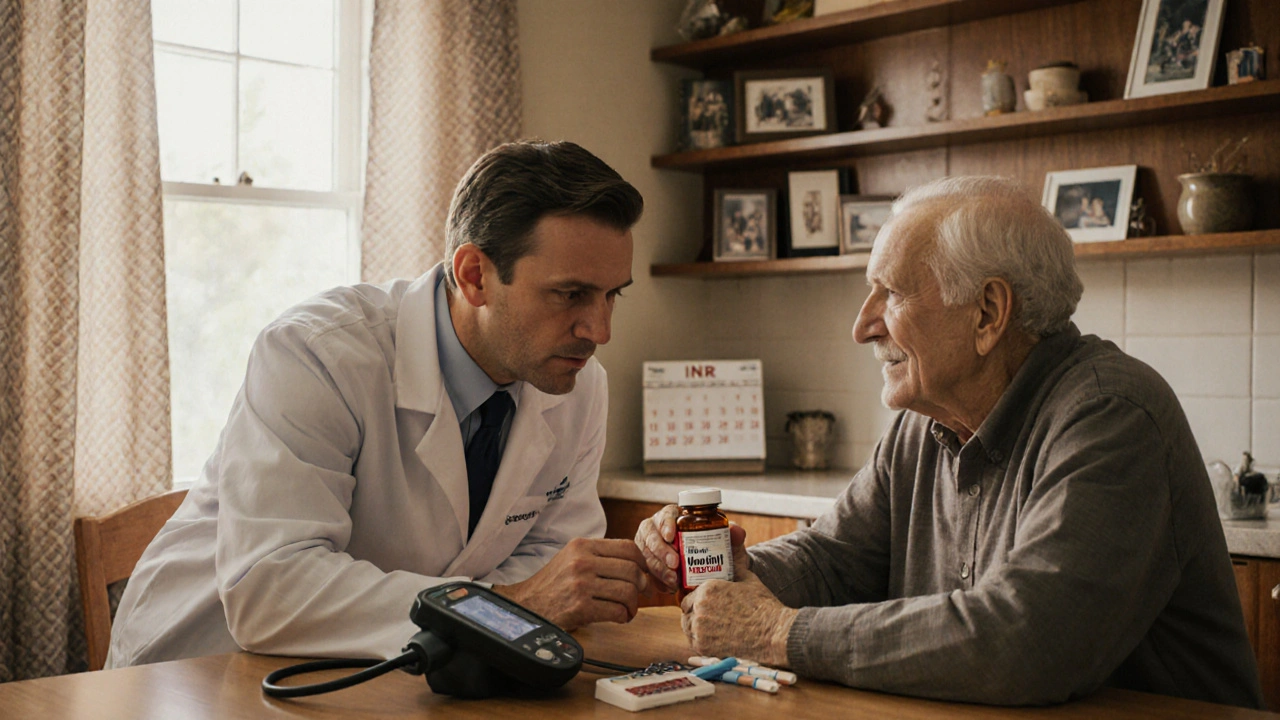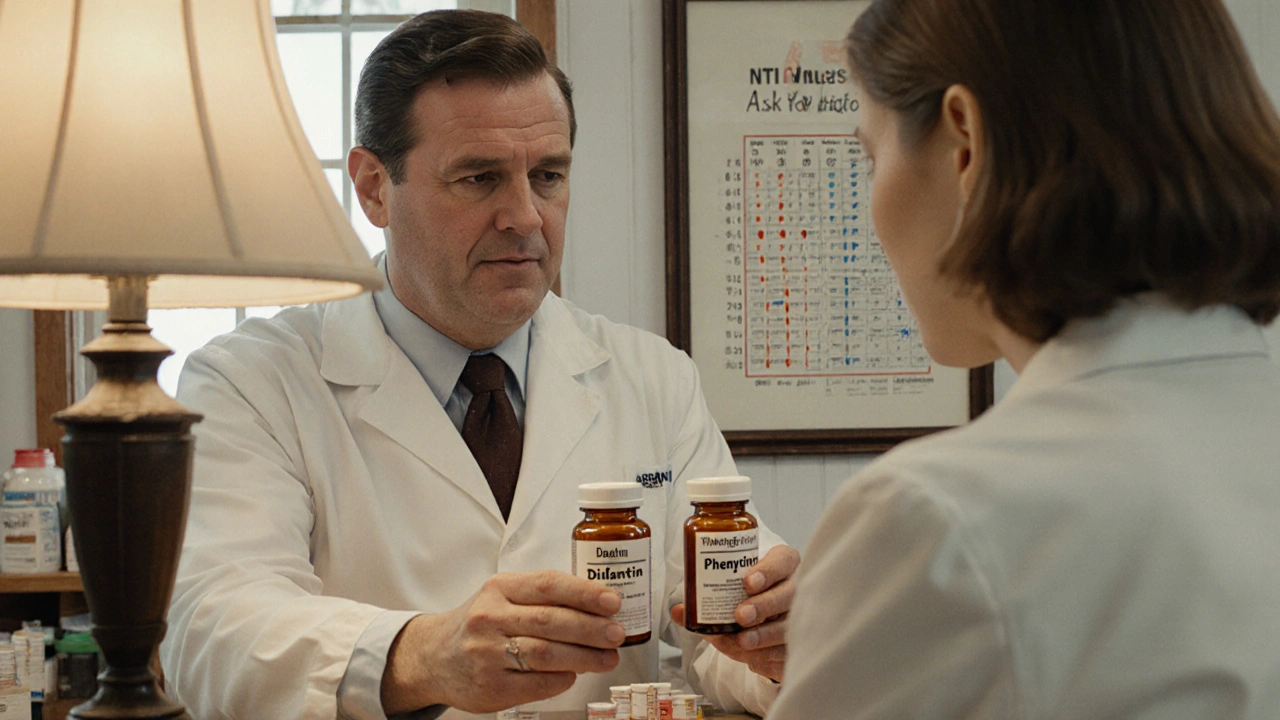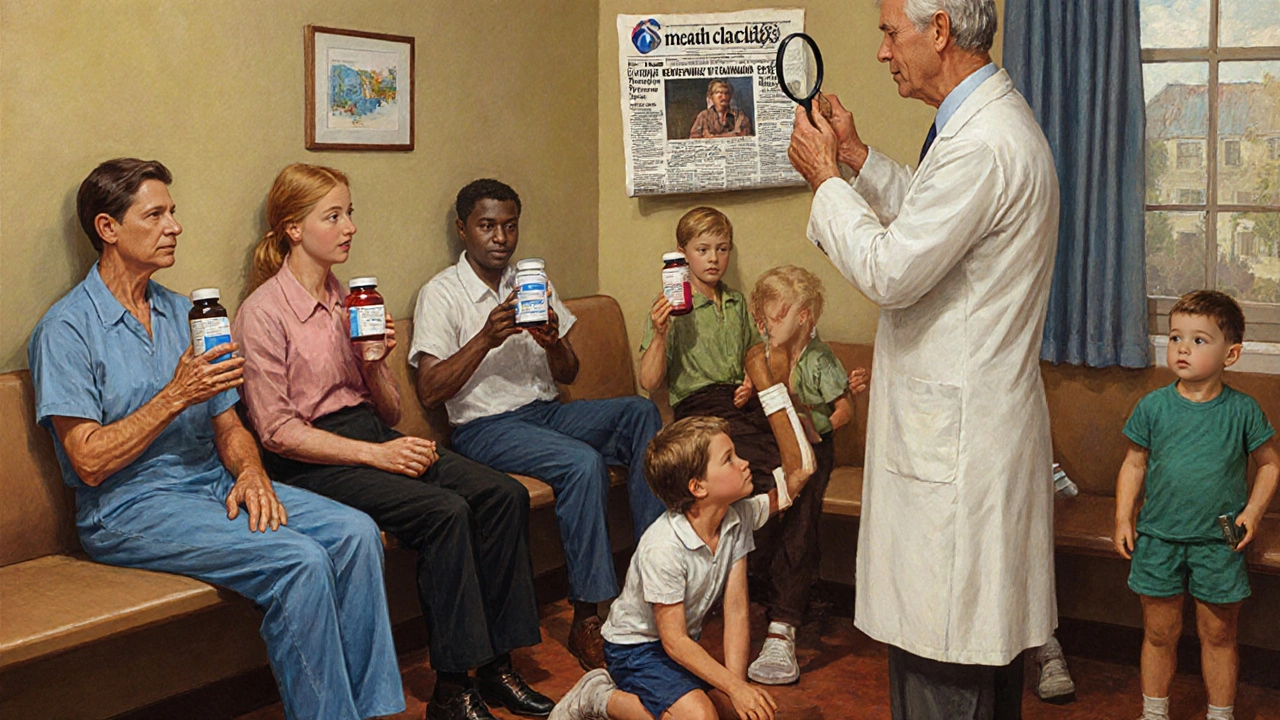Why Generic Switching Raises Concerns for NTI Drugs
 Nov, 25 2025
Nov, 25 2025
What Makes NTI Drugs Different?
NTI drugs - narrow therapeutic index drugs - are not like your typical prescription pills. They work in a razor-thin zone. Too little, and they don’t work. Too much, and they can kill you. The difference between the lowest dose that helps and the lowest dose that harms is two times or less. That’s it. For most medicines, your body can handle a bit of variation. For NTI drugs, even a 10% change in blood levels can send you from safe to dangerous.
Take warfarin, for example. It’s a blood thinner. Doctors aim to keep your INR - a measure of how long your blood takes to clot - between 2.0 and 3.0. If it drops below 2.0, you could get a clot and have a stroke. If it climbs above 3.0, you could bleed internally. A small switch in the generic version might push you out of that range. No warning. No symptoms until it’s too late.
Same with phenytoin, used for seizures. The safe range is 10 to 20 mcg/mL. Go above 20, and you get dizziness, shaky eyes, trouble walking - signs of toxicity. Go below 10, and seizures return. Patients have had breakthrough seizures after switching from brand-name Dilantin to a generic version, even though both were labeled "bioequivalent."
Why the 80-125% Rule Doesn’t Work for NTI Drugs
The FDA lets generic drugs be considered "bioequivalent" if their absorption in the body is within 80% to 125% of the brand-name drug. That means a generic could be 25% stronger or 20% weaker and still be approved. Sounds fine, right? Until you realize that for an NTI drug, that 25% difference could cross the line from therapeutic to toxic.
Let’s say your brand-name warfarin gives you a steady INR of 2.5. You switch to a generic that’s at the top end of the allowed range - 25% more potent. Your INR could jump to 3.1. That’s a 24% increase in blood-thinning effect. Now you’re at risk of bleeding. On the flip side, if the generic is 20% weaker, your INR might drop to 2.0, and suddenly your risk of stroke goes up.
It’s not theoretical. In the 1980s, patients on carbamazepine - another NTI drug for epilepsy - started having seizures after switching to generics. Blood tests showed the levels had dropped. The FDA approved the generics. The patients didn’t. No one warned them.
Real Stories, Real Risks
Patients on opioids like methadone face similar dangers. Methadone’s therapeutic window is so narrow that in someone who hasn’t built up tolerance, the dose that eases pain can also stop breathing. Chronic users develop tolerance, which makes the window even tighter. Switching to a generic with slightly higher bioavailability? You could overdose. Switching to one with lower bioavailability? You’re left in pain, possibly withdrawing.
One patient in Brisbane told her pharmacist she’d been stable on brand-name methadone for five years. After a pharmacy switch, she got a different generic. Within days, she was nauseous, dizzy, and couldn’t sleep. Her doctor found her methadone level had dropped 30%. She had to go back to the original brand - and the pharmacy had to be reminded that not all generics are interchangeable.
For digoxin, used in heart failure, even tiny changes can cause irregular heart rhythms. Lithium, used for bipolar disorder, has a therapeutic range of 0.6 to 1.0 mmol/L. Go above 1.2, and you risk tremors, confusion, even kidney damage. A study in 2018 found that patients switched from brand to generic lithium had more frequent lab tests and ER visits in the following month.

The FDA Says It’s Fine. Doctors Say Otherwise.
The FDA maintains that approved generics are safe and effective - even for NTI drugs. They say the 80-125% standard is scientifically sound. But here’s the catch: the FDA admits that for NTI drugs, "tighter limits" might be needed. They just haven’t set them yet.
Meanwhile, the American Medical Association says this: "The prescribing physician should ultimately make the decision on whether to allow generic substitution of an NTI drug." That’s not a suggestion. It’s a warning. Pharmacists can’t legally override that decision in most states.
Some states, like North Carolina, have laws that restrict automatic substitution for NTI drugs. Other states leave it up to the pharmacist - unless the doctor writes "dispense as written" on the prescription. Many doctors now do that for warfarin, phenytoin, and lithium. It’s not about distrust. It’s about control.
What Patients Need to Know
If you’re on an NTI drug, here’s what you must do:
- Know your drug. Is it on the NTI list? Warfarin, phenytoin, digoxin, lithium, theophylline, carbamazepine, methadone - these are the big ones.
- Ask your doctor to write "dispense as written" on your prescription. That stops the pharmacy from swapping brands without your consent.
- Never switch generics without telling your doctor. Even if it’s the same company - different batches, different fillers, different coatings can change absorption.
- Keep a medication list. Include the brand name, generic name, dose, and pharmacy. Bring it to every appointment.
- Get regular blood tests. For warfarin, that’s INR. For phenytoin, it’s serum levels. For lithium, it’s serum concentration. Don’t skip them.
Some patients think generics are cheaper, so they’re better. But with NTI drugs, saving $5 a month isn’t worth the risk of a seizure, a stroke, or a fatal overdose.

The Bigger Picture: Cost vs. Safety
Health systems want to cut costs. Generics save billions. That’s good. But for NTI drugs, the cost of a mistake isn’t financial - it’s human. A single bad switch can lead to hospitalization, long-term disability, or death. And those costs? They’re far higher than the price difference between brand and generic.
Experts are calling for better data. The American Society for Clinical Pharmacology and Therapeutics wants real-world studies tracking outcomes after generic switches for NTI drugs. Right now, we’re flying blind. We assume bioequivalence means therapeutic equivalence. But for these drugs, that assumption is dangerous.
The solution isn’t to ban generics. It’s to treat NTI drugs differently. Require tighter bioequivalence standards. Mandate pharmacist training on NTI risks. Let doctors decide - not pharmacists, not insurers, not algorithms.
What’s Next?
There’s no easy fix. But change is coming. Some drug manufacturers are now producing "specialized" generics for NTI drugs with tighter quality controls. The FDA is reviewing whether to create a separate category for these drugs - one with stricter testing requirements.
Until then, the safest path is simple: if you’re on an NTI drug, don’t switch without talking to your doctor. Keep your dose the same. Keep your pharmacy the same. And if you notice new symptoms after a switch - dizziness, confusion, seizures, unusual bleeding - get your blood tested immediately.
NTI drugs aren’t like other medications. They demand precision. And in medicine, precision saves lives.
What drugs are considered narrow therapeutic index (NTI) drugs?
Common NTI drugs include warfarin (blood thinner), phenytoin and carbamazepine (anti-seizure), lithium (mood stabilizer), digoxin (heart medication), theophylline (asthma), and methadone (pain and addiction treatment). These drugs have a very small margin between a helpful dose and a dangerous one - often less than a two-fold difference.
Can I switch from brand-name to generic NTI drugs safely?
It’s not recommended without close medical supervision. Even though generics meet FDA bioequivalence standards, those standards allow up to a 25% variation in absorption - too wide for NTI drugs. Some patients tolerate switches fine, but others experience serious side effects like seizures, bleeding, or toxicity. Always consult your doctor before switching.
Why does the FDA allow generic substitution if it’s risky?
The FDA approves generics based on current bioequivalence standards (80-125% absorption), which were designed for most medications. For NTI drugs, these standards are debated. The FDA acknowledges tighter limits may be needed but hasn’t implemented them yet. The agency maintains that approved generics are therapeutically equivalent - but many doctors and patients disagree based on real-world outcomes.
How can I tell if my medication is a generic or brand-name NTI drug?
Check the label. Brand names are usually capitalized and trademarked (e.g., Coumadin, Dilantin). Generics will list the chemical name (e.g., warfarin, phenytoin). If you’re unsure, ask your pharmacist. You can also ask your doctor to write "dispense as written" on your prescription to prevent substitution.
What should I do if I notice side effects after switching generics?
Contact your doctor immediately. For NTI drugs, symptoms like dizziness, confusion, unusual bleeding, seizures, or irregular heartbeat could signal dangerous changes in drug levels. Your doctor may order a blood test to check your drug concentration and may switch you back to your original version. Keep a record of when you switched and what symptoms you experienced - this helps guide future decisions.

Gina Banh
November 27, 2025 AT 04:02Doctors know this. Pharmacists know this. But the system? It's broken.
Deirdre Wilson
November 29, 2025 AT 00:47Why isn't this on the news?
Damon Stangherlin
November 29, 2025 AT 03:30Always ask for the brand if you're on lithium, phenytoin, or warfarin. Seriously.
Ryan C
November 29, 2025 AT 10:51Meanwhile, patients are dying. And the system just shrugs. #NTIDrugsAreNotRegularDrugs
Mqondisi Gumede
December 1, 2025 AT 05:16Jesús Vásquez pino
December 1, 2025 AT 16:36hannah mitchell
December 3, 2025 AT 01:27vikas kumar
December 4, 2025 AT 14:49Stephanie Deschenes
December 5, 2025 AT 21:01Cynthia Boen
December 6, 2025 AT 06:34Amanda Meyer
December 6, 2025 AT 12:50Dan Rua
December 7, 2025 AT 01:32